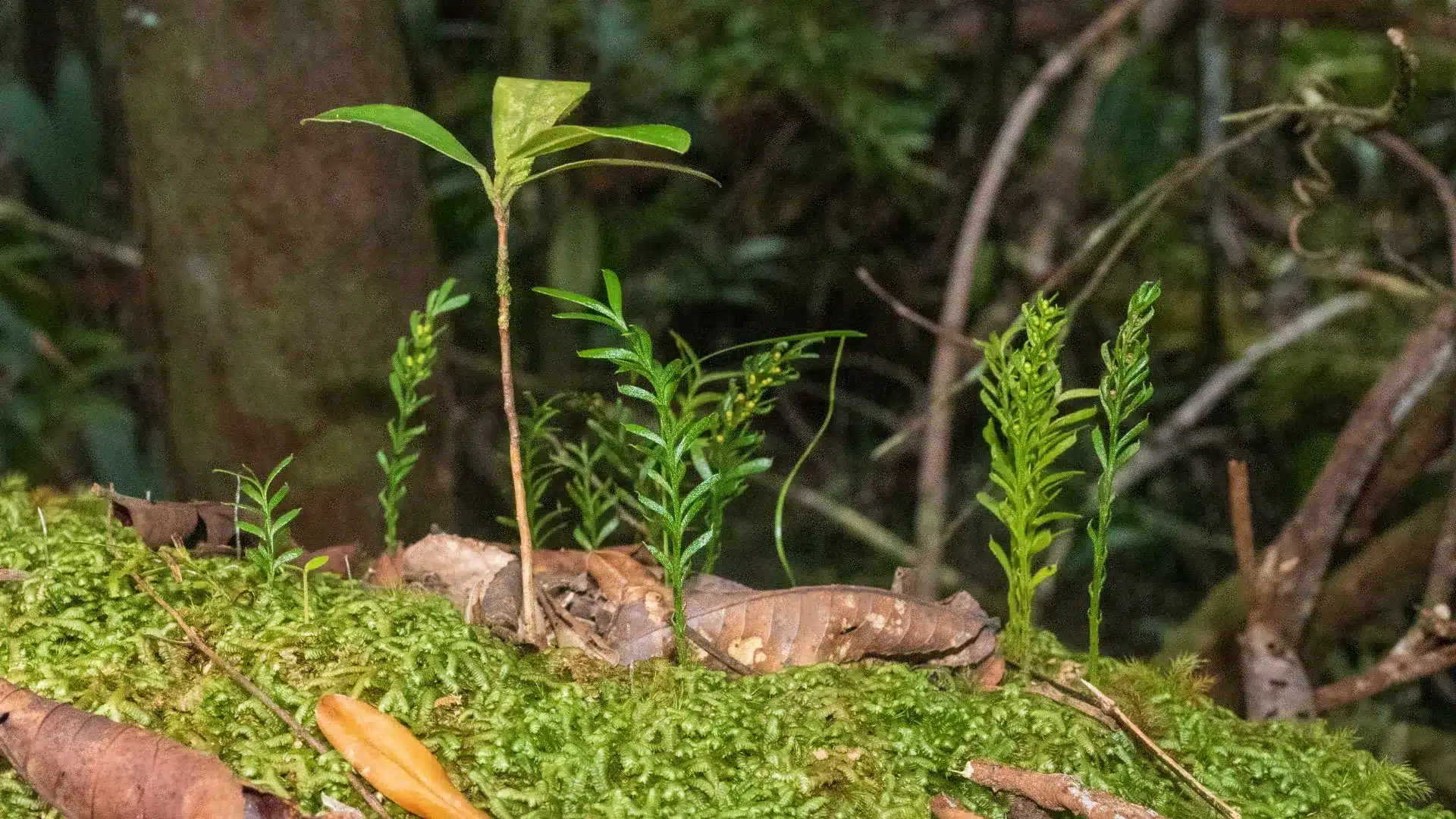About Tmesipteris oblanceolate:
- It is a rare species of fern which grows primarily on the ground or atop fallen tree trunks on the island nation of New Caledonia (an overseas French territory situated in the Southwest Pacific), and on neighboring islands such as Vanuatu.
- It is a small plant, typically 10-15 centimeters (4-6 inches) in height.
- It has a record-breaking genome size of 160.45 billion base pairs (Gbp), the units that make up a strand of DNA, 11 billion more than the previous record holder, the Japanese flowering plant Paris japonica, and 50 times more than the human genome.
- If stretched out like from a ball of yarn, the length of the DNA in each cell of this fern would extend nearly 350 feet (106 meters). The human genome would extend a mere 6-1/2 feet (2 meters).
- Tmesipteris is a small genus of ferns whose ancestors evolved about 350 million years ago — well before dinosaurs set foot on Earth.
- It is distinguished by its mainly epiphytic habit (it grows mainly on the trunks and branches of trees) and restricted distribution in Oceania and several Pacific Islands.
What are Ferns?
- Ferns are plants that do not have flowers.
- Similar to flowering plants, ferns have roots, stems, and leaves.
- However, unlike flowering plants, ferns do not have flowers or seeds; instead, they usually reproduce sexually by tiny spores or sometimes can reproduce vegetatively.
Q1: What is Genome?
A genome is the complete set of genetic information in an organism. It provides all of the information the organism requires to function. In living organisms, the genome is stored in long molecules of DNA called chromosomes. Small sections of DNA, called genes, code for the RNA and protein molecules required by the organism. In eukaryotes, each cell’s genome is contained within a membrane-bound structure called the nucleus. Prokaryotes, which contain no inner membranes, store their genome in a region of the cytoplasm called the nucleoid. The full range of RNA molecules expressed by a genome is known as its transcriptome, and the full assortment of proteins produced by the genome is called its proteome.
Source: Humble fern from New Caledonia boasts world’s largest genome
Last updated on December, 2025
→ Check out the latest UPSC Syllabus 2026 here.
→ Join Vajiram & Ravi’s Interview Guidance Programme for expert help to crack your final UPSC stage.
→ UPSC Mains Result 2025 is now out.
→ UPSC Notification 2026 is scheduled to be released on January 14, 2026.
→ UPSC Calendar 2026 is released on 15th May, 2025.
→ The UPSC Vacancy 2025 were released 1129, out of which 979 were for UPSC CSE and remaining 150 are for UPSC IFoS.
→ UPSC Prelims 2026 will be conducted on 24th May, 2026 & UPSC Mains 2026 will be conducted on 21st August 2026.
→ The UPSC Selection Process is of 3 stages-Prelims, Mains and Interview.
→ UPSC Result 2024 is released with latest UPSC Marksheet 2024. Check Now!
→ UPSC Prelims Result 2025 is out now for the CSE held on 25 May 2025.
→ UPSC Toppers List 2024 is released now. Shakti Dubey is UPSC AIR 1 2024 Topper.
→ UPSC Prelims Question Paper 2025 and Unofficial Prelims Answer Key 2025 are available now.
→ UPSC Mains Question Paper 2025 is out for Essay, GS 1, 2, 3 & GS 4.
→ UPSC Mains Indian Language Question Paper 2025 is now out.
→ UPSC Mains Optional Question Paper 2025 is now out.
→ Also check Best IAS Coaching in Delhi

















